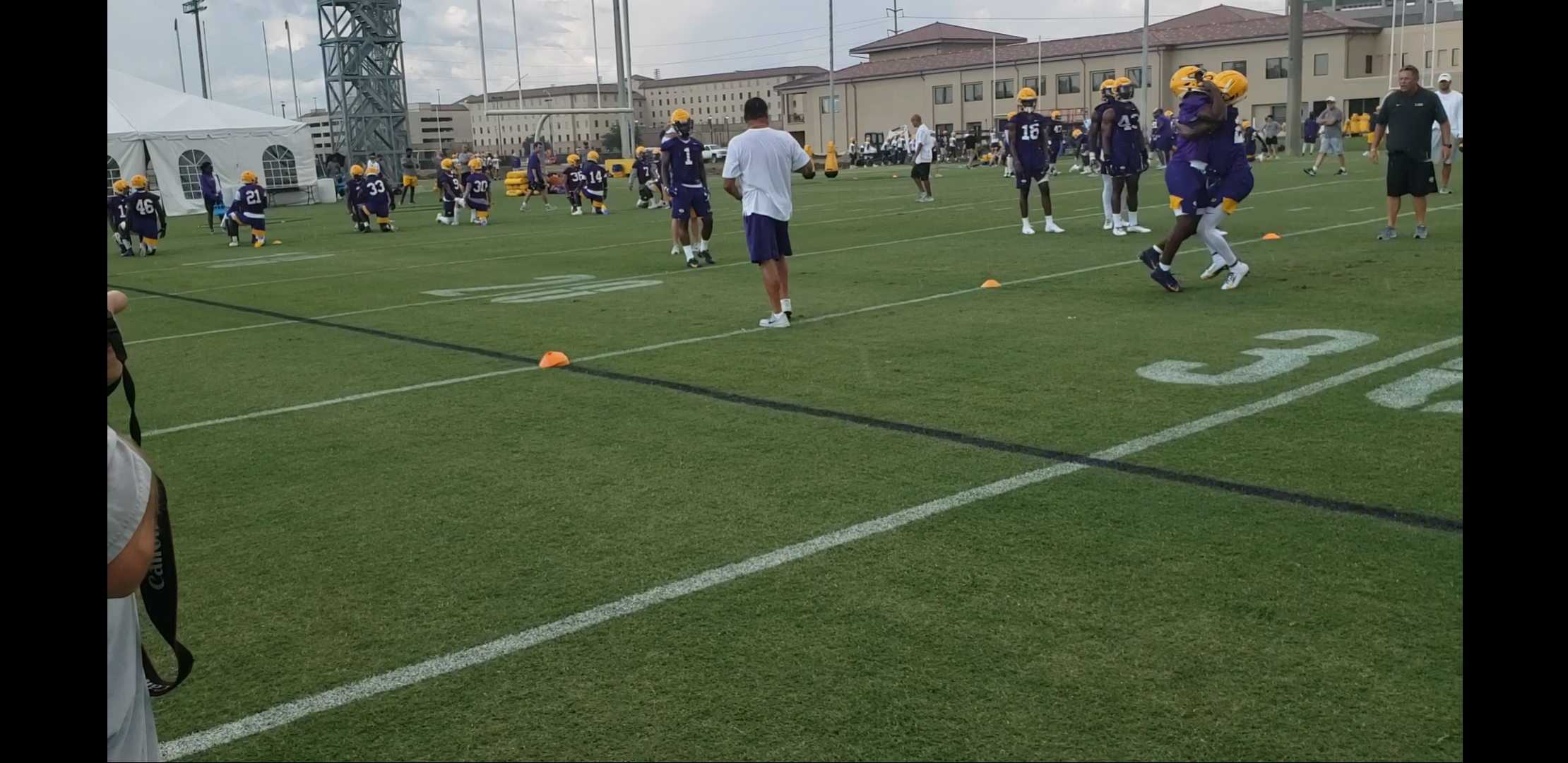UCF defensive back Brandon Moore looked to be just about in lockstep with Ja’Marr Chase when the ball left Joe Burrow’s hand.
It didn’t stay that way for long.
Chase set up the route masterfully. He shimmy stepped close to the first-down marker, as if running a curl. Moore only slightly shifted his weight forward, but it was too much. The ball was in the end zone faster than you could say double move.
That 32-yard touchdown catch highlighted a breakout performance for Chase in LSU’s 40-32 win in the Fiesta Bowl. LSU’s ultra-talented receiver capped his freshman season with a team-leading six catches for 93 yards, including that scoring strike in the third quarter.
Just how good was the rookie in the Fiesta Bowl? Burrow had a perfect passer rating of 158.3 when targeting Chase, and according to Pro Football Focus, the receiver graded out as LSU’s second-best player in the game (80.1), behind only Burrow (83.9).
That performance represents a level of sustained brilliance that had come in brief glimpses throughout the season. He’d shown a propensity for the circus catch, like the clinical toe tap he pulled off in the Fiesta Bowl, but he hadn’t topped three receptions nor 45 yards in a single game before the bowl.
Chase and fellow freshman Terrace Marshall were the crown jewels of LSU’s 2018 recruiting class. LSU coach Ed Orgeron compared them to Jarvis Landry and Odell Bechkam Jr. on National Signing Day. Both were named co-starters after strong showings in fall camp.
Each had their moments this season, but the rookie pair finished with a combined 35 catches for 505 yards. Chase scored three times while Marshall didn’t find the end zone.
That begs a question: considering how much LSU struggled to throw the ball at times this season, why weren’t Chase and Marshall more heavily involved in the passing game?
Offensive coordinator Steve Ensminger said it was never a question of talent for the two freshmen. Both are big, fast and have good hands. It was a matter of adjusting to life in the Southeastern Conference and learning some of the intricacies that come along with it.
“We knew they could catch the football. It was obvious during camp, but it’s a learning process that in our league, probably 80 percent of the time you’re going to get pressed,” Ensminger said. “When you first come out of high school, they don’t press a lot. There’s very little of it. Everything is timing, like I can run my fifth-step out route like this. When they start pressing you and getting physical, everything changes.
“When you start running crossing routes, as an example, and it’s man coverage, if you keep it high, the defensive back undercuts it. You have to understand that you flatten it out against man coverage and run away from it. You want to get high against zone coverage because it’ll affect the will linebacker. Those little things, as a young kid, are hard to learn. They don’t see all that in high school.”
LSU promoted long-time NFL assistant Jerry Sullivan to a senior offensive assistant role largely to coax more production out of a young, talented stable of receivers.
Sullivan is renowned for being a master technician. He can often be seen during practice schooling his charges on the finer points of footwork. Even if somebody makes a play, if their steps weren’t precisely executed, he’ll make them repeat the drill.
The coach probably had a big smile on his face as Chase burned a cornerback thanks to some flawless footwork. He explained why a breakout hadn’t happened sooner for the former five-star prospects.
“It looks easier than it is,” Sullivan said.” All of the sudden you’re playing against some guys that are going to be pro guys, and here you are playing against them right out of high school. There’s a whole new learning curve there. The route tree, getting a feel for the quarterback, it takes time. These two have done a really good job coming along.”
Sullivan continued: “As I’ve said several times, there’s a lot of average players, some good players and some great players. Being good is hard to maintain week in and week out. So to stay on an even keel and stack up those good games takes time. It takes learning experience. It takes work.”
Both receivers dealt with their fair share of challenges this season, including some that weren’t strictly the nature of being freshmen in the SEC.
Marshall enrolled early, but he was rehabbing a significant knee injury suffered in high school. He also dealt with a minor injury that curtailed his reps at some point this season.
“There was a lot of stuff I had to learn,” Marshall said. “I had to get used to the speed of the game. That’s one thing I had to get better at, but I’ll be ready to go next season.”
Chase didn’t arrive on campus until the summer, meaning he couldn’t work with Sullivan and the staff until fall camp. Chase was ready to roll physically from day one, but the mental side of the game took some getting used to.
“This level is more about smarts,” Chase said. “You’ve got to be quick on your feet. You’ve got to be quicker in terms of reaction times. You’ve got to make better decisions. You can’t just go out there and play how you used to play.”
LSU will have quite the three-headed monster at receiver if Chase and Marshall take leaps at all similar to the one Justin Jefferson took between year one and year two.
Jefferson emerged as LSU’s go-to guy after not recording a reception as a freshman, finishing 2018 as LSU’s leading receiver in terms of catches (54), yards (875) and touchdowns (6).
“The future is great for this receiver group,” Marshall said with a smile.




Be the first to comment